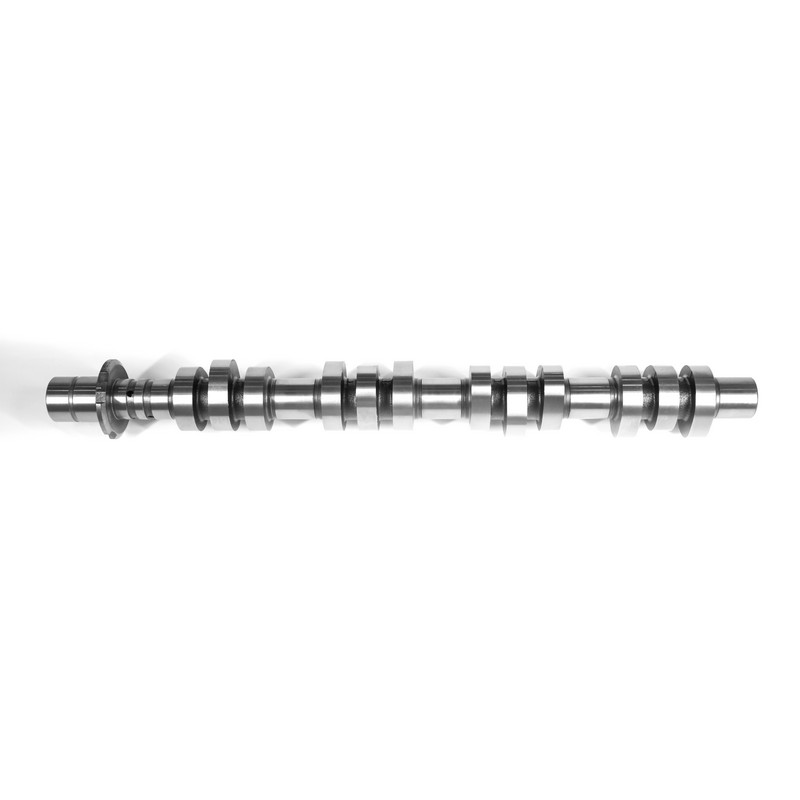The FORD car camshaft is a critical engine component responsible for orchestrating the precise opening and closing of the engine's valves. This synchronization is vital for engine breathing, directly influencing performance, fuel efficiency, and emissions. Understanding its role, recognizing signs of failure, and knowing your options for repair are essential for any vehicle owner looking to maintain their engine's health and longevity. This comprehensive guide will delve deep into the world of camshafts, providing you with the expert knowledge you need.
Located within the engine block or cylinder head, the camshaft is a rotating shaft with a series of oblong lobes, or cams. As the shaft rotates, these lobes push against the valves, opening them at the exact moment required for intake and exhaust cycles. Its operation is perfectly timed with the crankshaft via a timing belt or chain, ensuring the pistons and valves move in harmony. A failure in this timing can lead to catastrophic engine damage.
Identifying early warning signs can save you from expensive repairs. A problematic camshaft or its associated components will present several distinct symptoms that should not be ignored. If you notice any of the following, it's advisable to have your vehicle inspected by a professional.
The camshaft position sensor is the brain's eyes for the camshaft. It monitors the shaft's speed and position, relaying this data to the engine control unit (ECU). When this sensor fails, it directly causes the symptoms listed above. Diagnosing FORD camshaft position sensor symptoms typically involves using an OBD-II scanner to read fault codes and a multimeter to test the sensor's electrical output.
The FORD camshaft replacement cost can vary widely based on the engine model, labor rates, and whether you're replacing just the sensor or the entire camshaft assembly. Replacing the camshaft itself is a major and labor-intensive job, as it often requires significant engine disassembly.
| Service | Estimated Parts Cost Range | Estimated Labor Hours |
| Camshaft Position Sensor Replacement | $50 - $150 | 1 - 2 hours |
| Single Camshaft Replacement (with timing component service) | $400 - $1,000+ (parts) | 5 - 10+ hours |
| Full Set (DOHC) Camshaft Replacement | $800 - $2,000+ (parts) | 8 - 15+ hours |
When facing a replacement, you'll have a choice between OEM (Original Equipment Manufacturer) and aftermarket performance camshafts. This is a critical decision that impacts your vehicle's character, making it a central part of FORD camshaft performance upgrades.
| Feature | OEM Camshaft | Performance Camshaft |
| Power Output | Factory Spec | Increased (especially mid-to-high RPM) |
| Drivability & Idle | Smooth and Predictable | Can be lumpy or rough at idle |
| Emissions | Compliant | May not be street-legal |
| Cost & Complexity | Standard | Often higher cost, may require tuning |
For the seasoned DIYer, a basic visual inspection is possible. How to inspect a FORD camshaft involves checking for visible signs of wear without a full teardown. This is often done when you already have the valve cover off for another service, like a spark plug change.

The camshaft is the maestro of your engine's valve train. Its sole purpose is to precisely control the opening and closing of the intake and exhaust valves. This allows the engine to take in air and fuel and expel exhaust gases. The timing of these events is critical and is synchronized with the movement of the pistons by the timing belt or chain. A properly functioning FORD car camshaft is fundamental to engine efficiency, power production, and smooth operation.
It is highly inadvisable. While the vehicle might run, a faulty sensor can cause the engine to stall, hesitate severely, or not start at all without warning. Furthermore, driving with a malfunctioning sensor can lead to incorrect fuel and ignition timing, potentially causing damage to the catalytic converter or even pre-ignition that could harm the pistons and valves. If you suspect FORD camshaft position sensor symptoms, address the issue promptly.
Under normal operating conditions with regular oil changes, a camshaft is designed to last the lifetime of the engine—often 150,000 to 200,000 miles or more. Failure is usually not due to the shaft itself wearing out, but rather related to external factors like oil starvation, poor oil quality, a failed timing component, or a faulty sensor. Proper maintenance is the key to maximizing its lifespan.
While both are crucial rotating shafts in the engine, their functions are distinct. The crankshaft converts the linear up-and-down motion of the pistons into rotational force that powers the transmission and wheels. The camshaft uses this rotation (it's driven by the crankshaft) to control the valve train. Think of the crankshaft as dealing with the pistons (power generation) and the camshaft as dealing with the valves (engine breathing).
Replacing the camshaft itself is considered one of the most advanced DIY automotive repairs. It requires extensive mechanical knowledge, a full set of tools, and a high degree of precision. The job involves dismantling a significant portion of the engine, setting precise timing marks, and using a torque wrench for accurate bolt tightening. For most people, especially when considering the FORD camshaft replacement cost of potential errors, this is a job best left to experienced professionals.